- Home
- Prelims
- Mains
- Current Affairs
- Study Materials
- Test Series
07th Oct 2021
THE STATE OF THE WORLD'S CHILDREN 2021
The State of the World’s Children report 2021, with first ever to focus on mental health has been released by UNICEF recently.
Highlights:

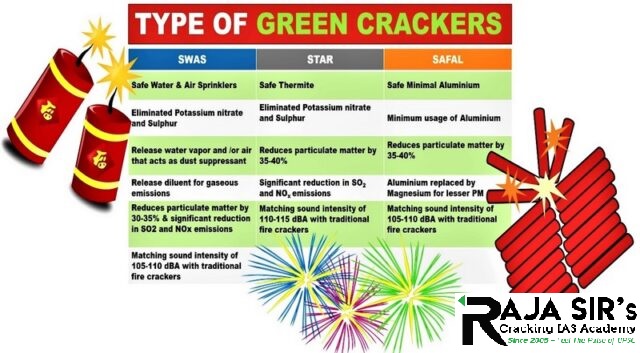
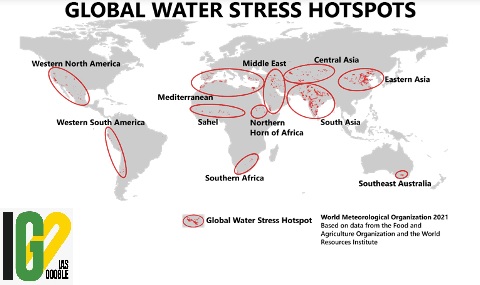
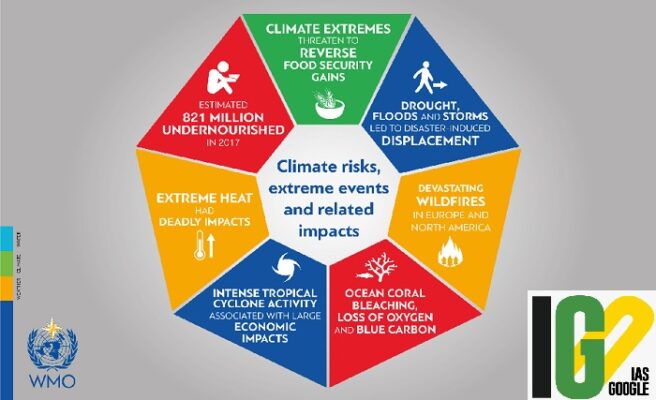 The WMO assessment of 101 countries for which data are available found that:
The WMO assessment of 101 countries for which data are available found that:
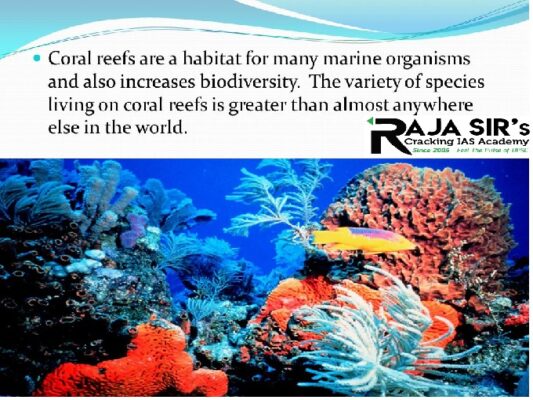
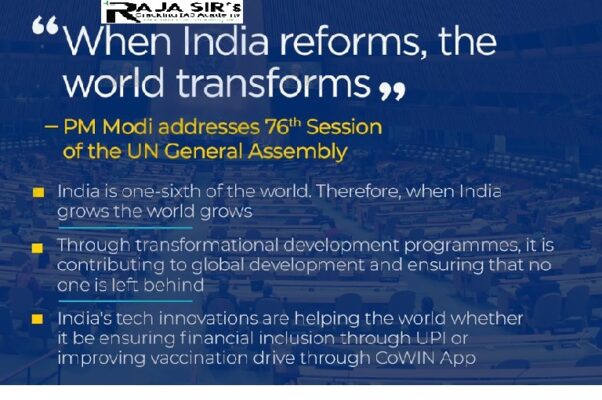
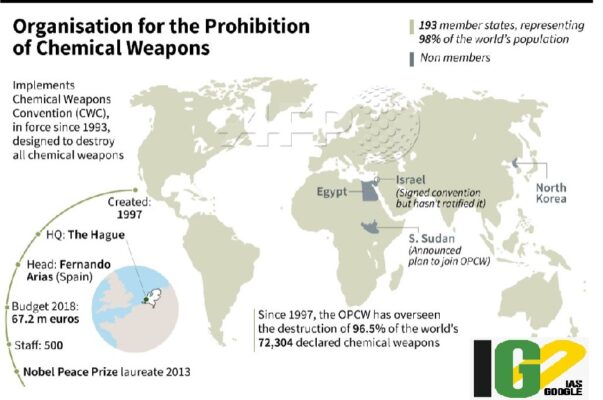

- COVID-19 had a strong impact on the mental health and well-being of the Children and young people.
- According to the latest estimates, more than 1 in 7 adolescents aged 10–19 is estimated to live with a diagnosed mental disorder globally.
- Almost 46,000 adolescents die from suicide each year, among the top five causes of death for their age group.
- Meanwhile, wide gaps persist between mental health needs and mental health funding.
- Only about 2% of government health budgets are allocated to mental health spending globally.
- More than 1.6 billion children have suffered some loss of education and disruption to routines, education, recreation etc.
- Even before the pandemic, too many children were burdened under the weight of unaddressed mental health issues.
- Diagnosed mental disorders, including ADHD, anxiety, autism, bipolar disorder, depression, eating disorders, intellectual disability can significantly harm children and young people’s health, education, life outcomes, and earning capacity.
- The government, and public and private sector partners should commit to communicate and act to promote mental health for all children, adolescents and caregivers.
- Urgent investment is required in child and adolescent mental health across sectors to support a whole-of-society approach to prevention, promotion and care.
- Integrating and scaling up evidence-based interventions across health, education and social protection sectors is required. The interventions may include parenting programmes that:
- Promote responsive, nurturing caregiving and support parent and caregiver mental health
- Ensure schools support mental health through quality services and positive relationships.
- The IPRS pilot exercise was launched in 2018, with an objective of enhancing industrial infrastructure competitiveness and supporting policy development for enabling industrialization across India.
- The 2nd edition of the IPRS Report was launched by the Ministry of Commerce & Industry.
- The IPRS 2.0 was started in 2020 & saw the participation of all the States of India and 51 SEZs, including 29 Private & 24 Private Sector Industrial Parks.
- Ratings were undertaken for 449 out of 478 nominations received. The feedback survey involved responses from 5,700 tenants.
- IPRS 2.0 framework is four pillared model for assessment of industrial infrastructure in India:
- Internal infrastructure (Sub pillars- Utilities, Common Infrastructure, Value added infrastructure)
- External infrastructure and connectivity
- Business support services
- Environment and safety management
- 41 Industrial Parks have been assessed as "Leaders" in the report.
- About 98% of these parks are from western (Maharashtra, Rajasthan and Gujarat) and northern (Uttarakhand) regions.
- 90 Industrial Parks have been rated as under Challenger category.
- 185 Industrial Parks have been rated as under "Aspirers".
- IPRS 2.0 Report will enhance India’s industrial competitiveness and attract investment.
- An industrial park is a section of the city that has been designated, planned, and zoned for industrial development rather than residential or commercial needs.
- The parks might include companies that provide manufacturing, transportation, and storage facilities, such as chemical plants, airports, and beverage manufacturers.
- Some industrial parks offer tax incentives for businesses to locate there, such as tax increment financing.
- However, the industrial parks often create environmental issues, due to increased pollution and the potential for surrounding area to be damaged by contaminants.
- Industrial Park should have at least ten industrial units in the area of 20 hectares.
- It should possess minimum infrastructure facilities like road, electricity, water and sewage and effluent treatment facilities.
- It should use only 50% of the total area allocated for the industrial units.
- It should follow the guidelines of the nearest urban area development authority for common facilities, like road, common plot etc.
- The minimum percentage of the area allocated for industrial use should not exceed 65% of the total area.
- It should provide 5% of the total area for Industrial workers, and the other 5% of the total area should be reserved for an office building.
- Industrial Park Scheme-2002 was notified by the Department for Promotion of Industry and Internal Trade (DPIIT) on 1st April, 2002.
- It is applicable for any undertaking which develops, develops and operates, or, maintains and operates, an Industrial Park for the period beginning 1st April, 1997 and ending 31st March, 2006.
- An Industrial Model Town for development of industrial infrastructure for carrying out integrated manufacturing activities, including research and development, by providing plots or sheds and common facilities within its precincts (zone/area).
- An Industrial Park for development of infrastructural facilities or built-up space with common facilities in any area allotted or earmarked for the purposes of specified industrial use.
- A Growth Centre subject to the scheme implemented by an undertaking and the Growth Centre is distinctly developed as a separate profit centre.
- IPRS Report is an extension of the India Industrial Land Bank which features more than 4,400 industrial parks in a GIS-enabled database.
- It is done to help investors identify their preferred location for investment.
- The portal is currently integrated with industry-based GIS system of 21 States and UTs and plot-wise information is updated on a real-time basis.
- IILB provides details of more than 5.6 lakh hectares on the click of a button and prospective entrepreneurs can apply sitting from anywhere across the world.
- GIS-enabled IILB acts as a one-stop source of information on Industrial Infrastructure.
- Investors can even remotely refer to this report to identify the suitable investable land area, as per the various parameters of infrastructure, connectivity, business support services and environment and safety standards.
- Project Development Cells (PDC) have been constituted in Ministries/Departments to create a shelf of readily investible projects.
- PDCs will handhold investors and aim to improve Ease of Doing Business to spur sectoral and economic growth.
- In 2018, the Supreme Court ruled out imposing a complete ban on the sale of firecrackers during Diwali but put certain conditions.
- The orders stipulated that only reduced emission and green crackers be allowed, with tight restrictions on timings to burst.

- Firecrackers use fuel and oxidisers to produce a combustion reaction, and the resulting explosion spreads the material in a superheated state.
- The metal salts in the explosive mix get ‘excited’ and emit light.
- The interaction between the firecracker fuel and the oxidiser releases energy.
- Metals in the mix with varying arrangement of electrons in shells outside their nucleus, produce different wavelengths of light in this reaction, generating spectacular colours.
- Barium compounds produce green light and Strontium and Lithium salts, red.
- However, burning of firecrackers is a peak source of pollution, made up of particles and gases.
- The Central Pollution Control Board conducted a study in Delhi in 2016, and found that the levels of Aluminium, Barium, Potassium, Sulphur, Iron and Strontium rose sharply on Diwali night, from low to extremely high.
- For instance, Barium rose from 0.268 micrograms per cubic metre to 95.954 mcg/m3.
- The pollution from firecrackers affects the health of people and animals, and aggravates the already poor ambient air quality in Indian cities.

- Green crackers are made using less polluting raw materials. Their chemical formulation ensures reduced particle emission into the atmosphere by suppressing the dust produced.
- While regular crackers emit about 160 decibels of sound, green crackers’ emission rate is limited to 110-125 decibels.
- National Environmental Engineering Research Institute (CSIR-NEERI), Nagpur has come out with firecrackers that have “reduced emission light and sound” and 30% less particulate matter using Potassium Nitrate as oxidant.
- There are three types of green crackers available in India, named:
- Safe Water Releaser (SWAS), which minimises the use of Potassium Nitrate and Sulphur use, but matches the sound intensity of conventional crackers.
- Safe Minimal Aluminium (SAFAL), where Aluminium use is low.
- Safe Thermite Crackers (STAR) with low Sulphur and Potassium Nitrate.
- These crackers are to be identified using unique QR codes to guide consumers.
- Of about 2,000 manufacturers, only 120 had the capacity and inclination to work with green crackers.

- Water-related hazards like floods and droughts are increasing because of climate change.
- As per the report, 3.6 billion people had inadequate access to water at least one month per year in 2018. By 2050, this is expected to rise to more than five billion.
- In the past 20 years, terrestrial water storage (TWS) has dropped at a rate of 1cm per year. The biggest losses are occurring in Antarctica and Greenland, but many highly populated lower latitude locations are experiencing significant water losses.
- TWS is the summation of all water on the land surface and in the subsurface, including soil moisture, snow and ice.
- Only 0.5% of water on Earth is useable and available freshwater.
- Water-related hazards have increased in frequency over the past 20 years. Since 2000, flood-related disasters have risen by 134% compared with the two previous decades.
- Most of the flood-related deaths and economic losses were recorded in Asia, where end-to-end warning systems for riverine floods require strengthening.
- Number and duration of droughts also increased by 29% over this same period. Most drought-related deaths occurred in Africa.
 The WMO assessment of 101 countries for which data are available found that:
The WMO assessment of 101 countries for which data are available found that:
- There is inadequate interaction among climate services providers and information users in 43% of WMO Members.
- Data is not collected for basic hydrological variables in approximately 40% of them.
- Hydrological data is not made available in 67% of them.
- End-to-end riverine flood forecasting and warning systems are absent or inadequate in 34% of those who provided data.
- End-to-end drought forecasting and warning systems are lacking or inadequate in 54% of them.
- The world is seriously behind schedule on the UN Sustainable Development Goal No. 6.
- (SDG 6) aims to ensure availability and sustainable management of water and sanitation for all.

- In the last decade, the world lost about 14 per cent of its coral reefs.
- Ocean-acidification, warmer sea temperatures and local stressors such as overfishing, pollution, unsustainable tourism and poor coastal management pose a combined threat to the coral ecosystems.
- Coral reefs across the world are under relentless stress from warming caused by climate change.
- Coral bleaching events caused by rise in elevated sea surface temperatures (SST) were responsible for coral loss.
- Large scale coral bleaching events were responsible for killing eight percent of the world’s corals in 1998.
- This is equivalent to more than the coral that is currently living on reefs in the Caribbean or Red Sea and Gulf of Aden regions.
- There has been a steady decrease in hard coral cover in the last four decades since 1978 when the world lost nine per cent of its corals.
- The worst-hit are the corals in South Asia, Australia, the Pacific, East Asia, the Western Indian Ocean and the Gulf of Oman.
- The decrease is disconcerting because live hard coral cover is an indicator of coral reef health.
- Since 2010, the amount of algae on the world's coral reefs has increased by about 20 per cent. Algal bloom on coral ridges are a sign of stress on the structures.
- Prior to this, there was twice as much coral on the world’s reefs as algae.
- This transition from live hard coral to algae-dominated reef communities impacts marine habitats, rendering them less bio-diverse and also affects the ecosystem services provided by them.
- Corals occupy less than one per cent of the ocean floor but over one billion people benefit directly from the reefs.
- The value of goods and services provided by coral reefs is estimated to be $2.7 trillion per year. This includes $36 billion in coral reef tourism.
- Persistent rise of land and sea temperatures is a threat to corals. The findings concur with past research that made similar predictions.
- The survival of corals is likely to drop below 50 per cent if sea surface temperatures increases by one degree.
- Coral reefs in East Asia’s Coral Triangle accounts for more than 30 per cent of the world’s reefs but has been less impacted by rising sea surface temperatures.
- Despite a decline in hard coral cover during the last decade, on average, these reefs have more coral today than in 1983.
- In 2019, the world regained two per cent of its coral cover in spite of a short interval between mass coral bleaching events in the last decade.
- These critical ecosystems have the capacity to recover if pressure on them eases. They can even resuscitate to their pre-1998 health in the next ten years.
- Coral reefs cover only 0.2 percent of the ocean floor, but they are home to at least a quarter of all marine animals and plants.
- Besides anchoring marine ecosystems, they also provide food, protection from storms and shoreline erosion and jobs for hundreds of millions of people worldwide.

- India has been drawing the attention of the world towards modern threats and the need to strengthen international cooperation to address them.
- Weapons of Mass Destruction and their delivery systems could endanger peace and security of entire world.
- Such weapons in the hands of terrorists are the most threatening form of illicit small arms and light weapons.
- India values the effective implementation of the U.N. Program of Action to combat terrorism and transnational crime.
- India is firmly committed to the goal of universal, non-discriminatory and verifiable nuclear disarmament.
- In 2007, in a working paper submitted to the Conference on Disarmament, India proposed for a step-by-step approach for the total elimination of nuclear weapons.
- It calls on the Conference on Disarmament to negotiate a Comprehensive Nuclear Weapons Convention.
- Cause death or serious injury of people through toxic or poisonous chemicals
- Disseminate disease-causing organisms or toxins to harm humans, animals, or plants.
- Deliver nuclear explosive devices, or toxin agents to use them for hostile purposes and armed conflict.
- It was recognized by the Tenth Session on Disarmament of the United Nations General Assembly in 1978 as a single multilateral disarmament negotiating forum of the international community.
- The Conference is comprised of 65 member States, including five Non-Proliferation nuclear-weapon States and 60 other States of key military significance.
- It succeeded other Geneva-based negotiating fora, which include
- The Ten-Nation Committee on Disarmament (1960)
- The Eighteen-Nation Committee on Disarmament (1962-68).
- The Conference of the Committee on Disarmament (1969-78).
- The CD has negotiated major multilateral arms limitation and disarmament agreements such as
- The Treaty on the Non-Proliferation of nuclear weapons (NPT).
- The Convention on the Prohibition of the Development of Bacteriological and Toxin Weapons and their destruction (BWC).
- The Convention on the Prohibition of the Development and Use of Chemical Weapons and on Their Destruction (CWC).
- Comprehensive Nuclear-Test-Ban Treaty (CTBT).
- Cessation of the nuclear arms race and nuclear disarmament.
- Prevention of nuclear war, including all related matters and an arms race in outer space.
- Effective international arrangements to assure non-nuclear-weapon States against the use of nuclear weapons.
- New types of weapons of mass destruction like radiological weapons.
- Comprehensive Programme of disarmament and transparency in armaments.

- The OPCW is the implementing body of the Chemical Weapons Convention (CWC), which came into force in 1997.
- It has 193 Member States, working together to achieve a world free of chemical weapons.
- Preventing chemical weapons used for warfare, thereby strengthening international security.
- Destroying existing chemical weapons under international verification by the OPCW.
- Monitoring chemical industry to prevent new weapons from re-emerging.
- Aiding and protection to States Parties against chemical threats.
- Fostering international cooperation to strengthen implementation of the Convention and promote peaceful use of chemicals.
- Goods and services must be acquired in an effective, efficient, economical, and ethical manner.
- Access for all qualified suppliers competing for OPCW business must be open.
- Procurement process must be conducted in a fair and transparent manner, providing equal treatment to all vendors.
- Conflict of interest, both real and perceived, must be avoided.
- The allies (US & Japan) confirmed their cooperation towards achieving a free and open Indo-Pacific.
- U.S. President made a strong comment to defend Japan, including Article 5 of the U.S.-Japan security treaty.

- China and Taiwan claim that the islands have been a part of Chinese territory since the 16th century.
- It states that the Chinese first discovered and named the islands Diaoyu Dao. The waters surrounding these islands have traditionally been Chinese fishing grounds for generations.
- The islands were used by the Ming Dynasty as a coastal defence against Japanese pirates.
- China argues that Japan stole the islands during the First Sino-Japanese War (25 July 1894 – 17 April 1895).
- They believe that the agreements signed between the United States and Japan on the Senkaku islands are illegal and a violation of China’s territorial sovereignty.
- The Japanese claim that when the island was surveyed by them in the 1800’s, it was uninhabited and showed no signs of Chinese occupation.
- The islands were incorporated into Japanese territory in 1895 after their victory in the First Sino-Japanese War.
- Japan does not validate the points raised by China for its sovereignty.
- The Islands were included in the 1972 Okinawa Reversion Agreement between the United States and Japan where administrative rights were returned to Japan after American occupation.
- China has been violating the islands boundaries by sending both military and fishing ships into the Senkaku waters, despite protests from the Japanese government.
- Several incidents have taken place due to the presence of Chinese and Taiwanese fishing vessels in the zones claimed by Japan.
- Ships and vessels from the Chinese military have entered the area including planes/
- China established an Air Defence Identification Zone (ADIZ) in an area which encompasses the Senkaku Islands.
- China’s aggressive stance is a matter of serious concern for Japan, Taiwan, and the United States.
- With its aim to dominate the East and South China Sea, the islands are important in determining the maritime boundaries of China and Japan.
- If China manages to claim sovereignty over the Senkaku Islands, it could be hazardous for Japan.
- It will establish its hegemony over the East China Sea and military build-up on the islands could cause major problems.
- They could use the islands to block trade routes.
- Control of the islands could pave the way for an invasion of Taiwan by the Chinese who still claims it over the country.
- The emerging security threat from China has bolstered their rights for territorial sovereignty over the islands.









 Latest News
Latest News
 General Studies
General Studies